
Wednesday November 28, 2007
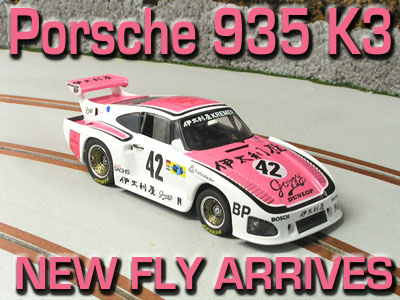
It seems that with models from Fly, I tend to get very picky. Not every car they make is one I must have and generally we have collected only several different series over the years with the Classics leading the way. However, this Porsche popped up on my list as reports from other enthusiasts started to appear saying how much they enjoyed the model. It has arrived here and time to see just what Fly has brought to our stable.
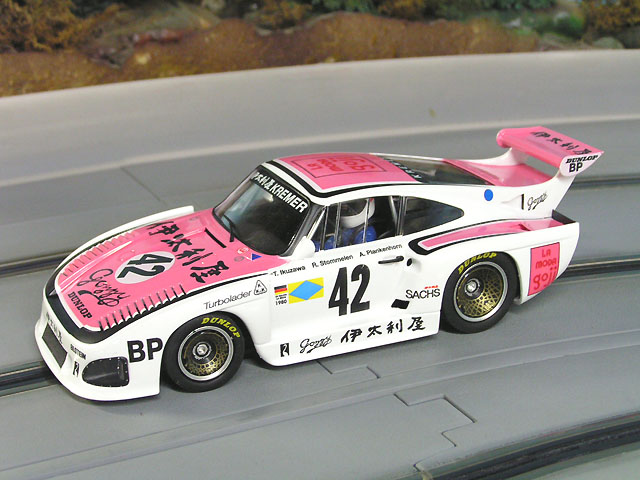
Even before we take this out of the case the livery alone will not be for everyone. An unusual choice given that pink is far from every racers favorite color. And the 1:1 itself did not do well at Le Mans in 1980 retiring with a blown head gasket. Perhaps Fly was making a car we could buy for our wives or girlfriends? Yes, I know it is a stereotype, but you never know.
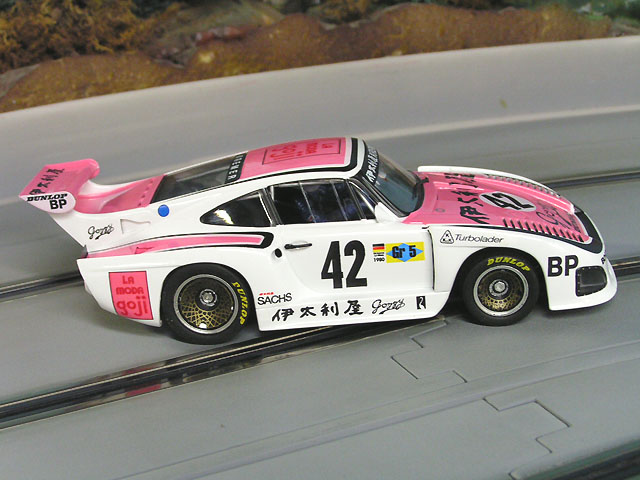
In any event it is here and it appears Fly has done another great job in the scale department. Nothing is perfect of course but comparing this to prototype photos tells me they have came close enough. Small details such as the front etched grill and rivet markings around the front light lenses and rear window add plenty of appeal for me.
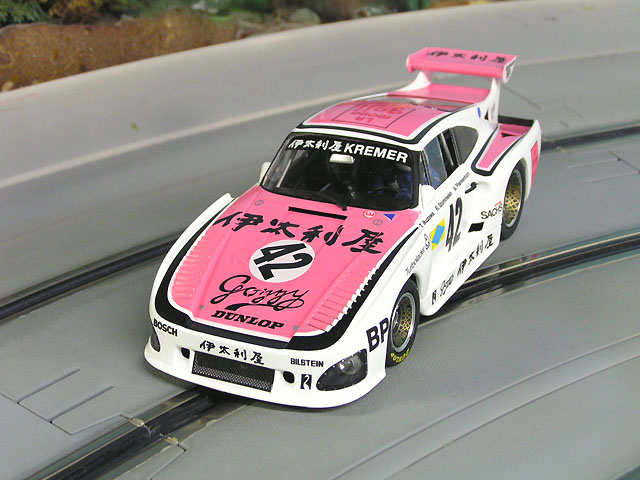
Paint and Tampo stamped markings are well done as we expect from Fly yet the absence of a clear coat over the markings is obvious. With other car makers making advances in paint work, perhaps Fly should start to notice this and seal the markings they painstakingly adorn the models with. I will wax this model as I do with most Fly cars to help seal the markings and prevent them from peeling or chipping prematurely.
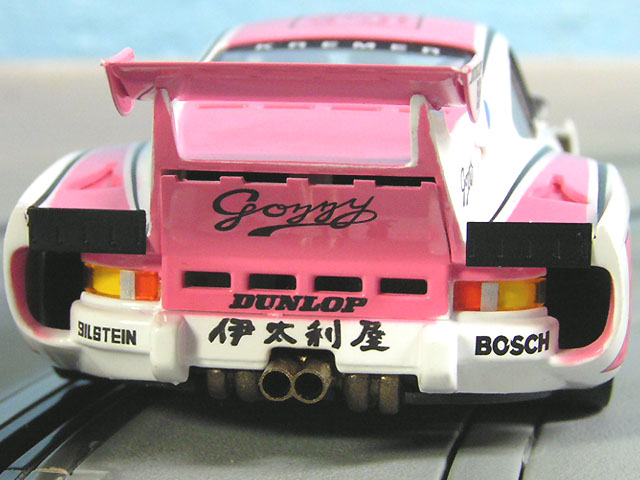
Interior detail is right where I expected it to be. Our driver figure sits in the full interior and the markings on him are well done. Small touches such as the visible roll bar, painted dash cluster and seat belts really draw you in and appreciate the effort put forth.
Looking around at the wheels and tires all seems to be in good order. The wheels themselves even have the BBS markings in them which impressed me as they could have easily omitted this and I would never miss them. More importantly they seemed fairly round and true although I had a suspicion there may be trouble in the rear. However, track testing will tell me for sure. While inspecting them I discovered the wheels were a 2 piece design. This happened when one of the inserts fell out as I spun the rear axle. No real issue here, a little adhesive will fix this although I was a little surprised.
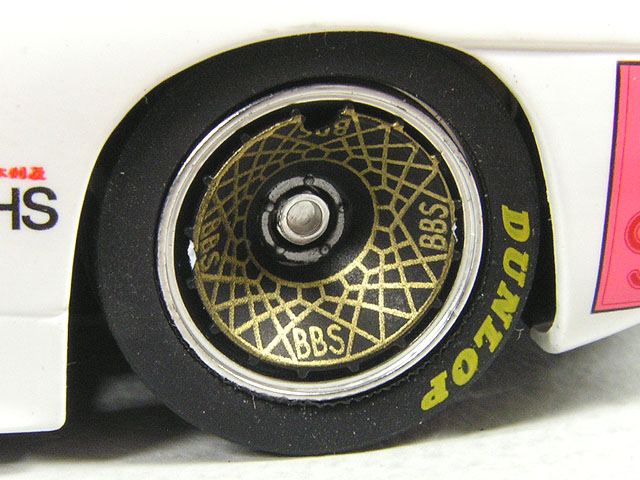
Box Stock Testing
Artin Plastic Track - Aftermarket Power @ 12 Volts - PARMA 25 OHM Control
Right from the box to the track we went and the first laps told me we needed work here. It did function however, just not very well. There was a noticeable wheel hop to it that was hard to ignore. Lap times reflected this with only a 4.9 second average. Braking and acceleration were crisp enough but it was hard to judge it given the rough ride we had.
But, this is a Fly car and we are no strangers in performing some clean up here and there to make things right. I still had high hopes for this ride.
Under The Hood
3 screws secure the body to the chassis and were a little on the tight side to remove. Once inside we see a very clean chassis with the standard Fly power-plant mounted in the sidewinder position at the very rear of the chassis behind the axle. It is equipped with a 11 tooth pinion that turns the 33 tooth crown gear. The crown gear is not solid, but a 4 spoke design and is marked with the correct number of teeth.
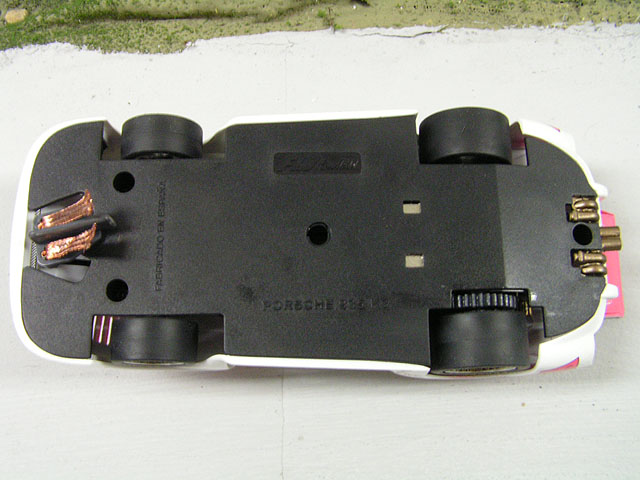
That chassis itself is oddly missing any reinforcing ribs to help stiffen the chassis making it VERY flexible. This does make it easy to pop out the standard bar magnet if you decide to do so. There are wire guides there to secure the wiring but you cannot use the rear ones without interfering with the interior tray. No real issue as they can be easily routed away in the center and then taped or hot glued in place.
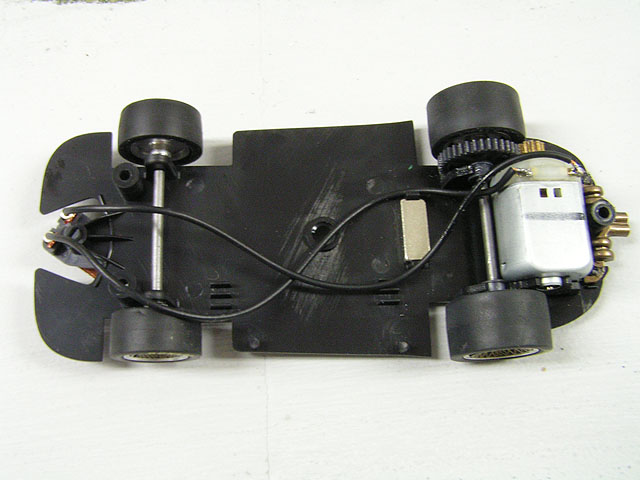
Up front is a solid front axle that had very little free-play which I liked. It has a small amount of vertical float which seemed just right to suit this model to a wide variety of track conditions. The standard Fly guide is in place and although has plenty of travel, is still shallow and I wish Fly would abandon this guide for one better suited for today's track systems. I will say it fit better in the chassis than I expected with very little slop.
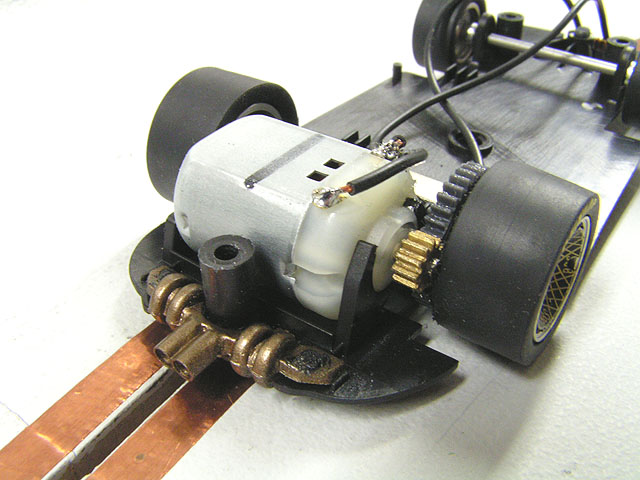
The rear axle and motor seemed snug in the chassis mount and I did not see any movement in the bushings under load. Gear mesh was also decent during testing and will only get better with break in. I noticed that Fly did trim the axle shaft here to clear the tire. They did not do a very good job as some excess flash is present but will be easily removed with a small file for smooth gear changes.
It was time to look at our wheels and sure enough the usual suspects were present. Excess flash molding on the inner rib of the wheel created a very large bulge on both sides of the wheel. I could also see that it had a low center as the edges of the rib had a small mold line clearly raised from center.
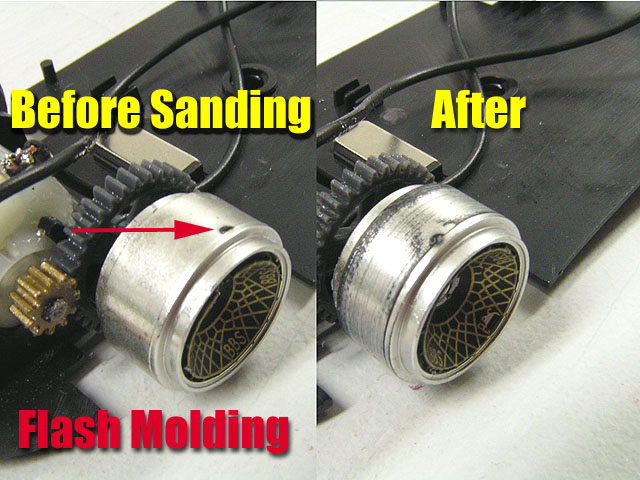
This might sound bad, but quickly fixed. I used a 9 volt battery and held it against the braids and used fine grit sandpaper to hold against the rib to clean it smooth. Once this was done we moved on to sanding the tires. These will need more than just a quick burst of sanding, but in just a couple of minutes it looked like we had things pretty close.
Box Stock Testing Part 2
Artin Plastic Track - Aftermarket Power @ 12 Volts - PARMA 25 OHM Control
After we cleaned up these wheels and tires I wanted to go back and test this car again on the Artin. The result? BAM! This car was now very smooth and operation was greatly improved. How much? Well after 25 laps our average was now 4.0 seconds! That is a marked improvement over the 4.9 we just had minutes before. Yes, now I was happy and knew that with some fine tuning here and there things could only improve.
Wood Track Testing
3 Lane MDF Routed Wood Road Course 4 by 16 Feet - Flat
Latex Surface
Copper Tape Conductivity - Aftermarket Power @ 12 Volts PARMA 25 OHM Control
On our wood road course the car operated decently but there was still some work to be done on the tires. I sanded again and ran it across tape. This helped matters a great deal but these tires need plenty of attention. The real issue here is the front end being so light. I literally would wheelie out of the slot on every hard acceleration. The cure? Lead of course. I added Slick 7 self adhesive lead until the front end stayed flat and smooth. And here is where things began to get fun. Lap times were in the 5.7 second range but that is not the real story. It was the fun I had drifting and blasting around our track.
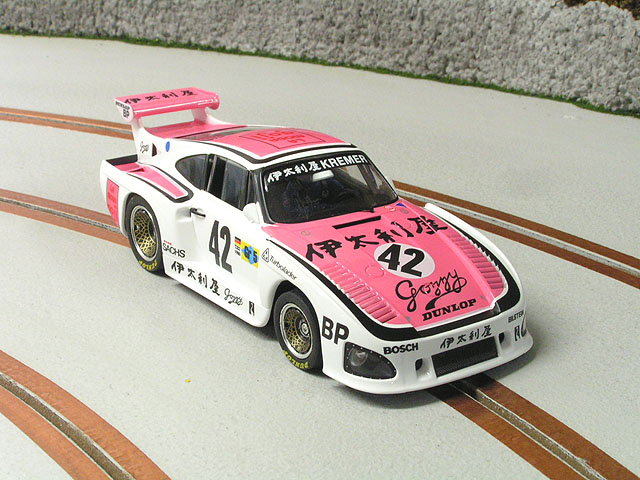
Final Thoughts
In the end this model has great potential and I was glad I chose it for our collection. Yes, it needs work and it is really up to you whether you feel it is worth the effort or not. I feel most cars by Fly are better suited for the advanced enthusiasts who can tune and adjust them for optimal performance. Although it may sound like I am sugar-coating this, I can't help but convey how much fun we have had with Fly cars after a little tuning. Yes, they sometimes need attention but when these adjustments are completed they end up providing us with countless hours of fun that have no price tag. Such was the case with this Porsche and it will only lead to another addition to our stable soon.
- Harry
As always feel free to contact me about this article or just the hobby in general at harry@homeracingworld.com, or better yet drop into our Message Forum and share your thoughts with other enthusiasts!
Thanks Go To SLOTCARPLACE For Sponsoring This Review!
Click Here To Go Direct To The SlotCarPlace Catalog Home